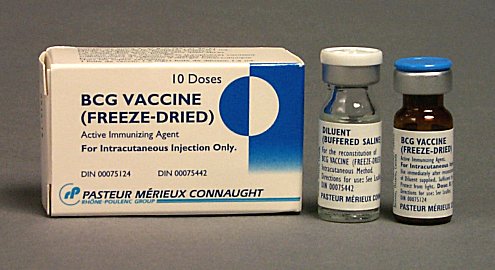
Bacille Calmette-Guerin(BCG) vaccine in dermatology

- The Bacillus Calmette-Guérin (BCG) vaccine was developed
in the early part of the 20th Century by Albert Calmette and
Camille Guérin. - BCG was introduced as a prophylactic agent against tuberculosis as well as in the treatment of alopecia areata and recurrent oral aphthosis.
- In most of the tuberculosis-endemic countries, BCG (live-attenuated vaccine derived from Mycobacterium bovis), is a part of the immunization schedule.
- Its efficacy in preventing pulmonary tuberculosis in adults is highly variable.
- Although insufficient to protect against tuberculosis, a single dose of BCG is capable of preventing leprosy.
Types of BCG used in dermatological diseases
- Topical BCG.(1,2)
- Intralesional BCG (IL-BCG).
Uses of BCG in dermatology
- Warts
- Periungual wart.
- Recalcitrant wart.
- Resistant condylomata acuminata.
- Recurrent multiple cutaneous warts.
- Alopecia areata.
- Oral and cutaneous lichen planus.
- Recurrent oral aphthosis.
- Recurrent herpes simplex infections.
- Cutaneous metastatic melanoma
Mechanism of action
- The exact mechanism is unknown.
- It stimulates macrophages, T- and B-lymphocytes, natural killer cell function.
- It activates CD4 T cells and an increases cytokines such as interleukin (IL)‐1, IL‐2, and tumor necrosis factor alpha (TNF‐α). IL‐1 and TNF‐α have antiviral effects on HPV by downregulating its gene transcription.
Side effects of IL‐BCG
BCG-induced reactions : local, regional, distant, or disseminated pattern.
BCGitis refers to local and regional patterns.
BCGosis refers to the distant and disseminated pattern.
- Pain.
- Edema.
- Ulceration.
- Scarring.
- Influenza‐like symptoms such as fever, chills and draining sinuses, which could be efficiently managed by isoniazid.
- Regional lymphadenitis, local abscesses and occasional systemic infections with associated granulomatous hepatitis.
- Pityriasis rosea‐like eruption, urticaria and erythema multiforme.
- Generalized maculopapular or purpuric eruptions associated with arthralgia and abdominal pain or myalgia, usually after repeated vaccination.
- Extensive ulceration.
- Lupus vulgaris may develop at the vaccination site, usually a few months after vaccination.
- Scrofuloderma.
- BCC in a BCG scar.
- SCC in a BCG induced lupus vulgaris.
- Sweet’s syndrome.
- Severe hypotension and signs of disseminated intravascular coagulation were observed ( rare).
- Multiple tuberculoid granulomas.
Licensed BCG vaccines differ markedly in their content of viable mycobacteria possibly contributing to formulation-dependent activation of innate and adaptive immunity and distinct protective effects.*
New strategies in BCG immunotherapy may involve use of vitamin D analogs that might reduce the exacerbated inflammatory process and untoward side effect of BCG in vaccinated population in high TB endemic setting.*
Contraindications
- Anaphylaxis or a severe hypersensitivity ( absolute contraindication )
- HIV‐infected infants should not receive BCG vaccination due to the high rates of BCG‐associated disease.
- Impaired immunity (HIV infection, known or suspected congenital immunodeficiency, leukaemia, lymphoma or generalized malignant disease.
- Patients under immunosupressive treatment.
- BCG vaccines should not be given 1 year prior to, during, or 1 year following treatment with ustekinumab.
- BCG vaccination should not be given during pregnancy.
Was this helpful?
10 / 0
Good